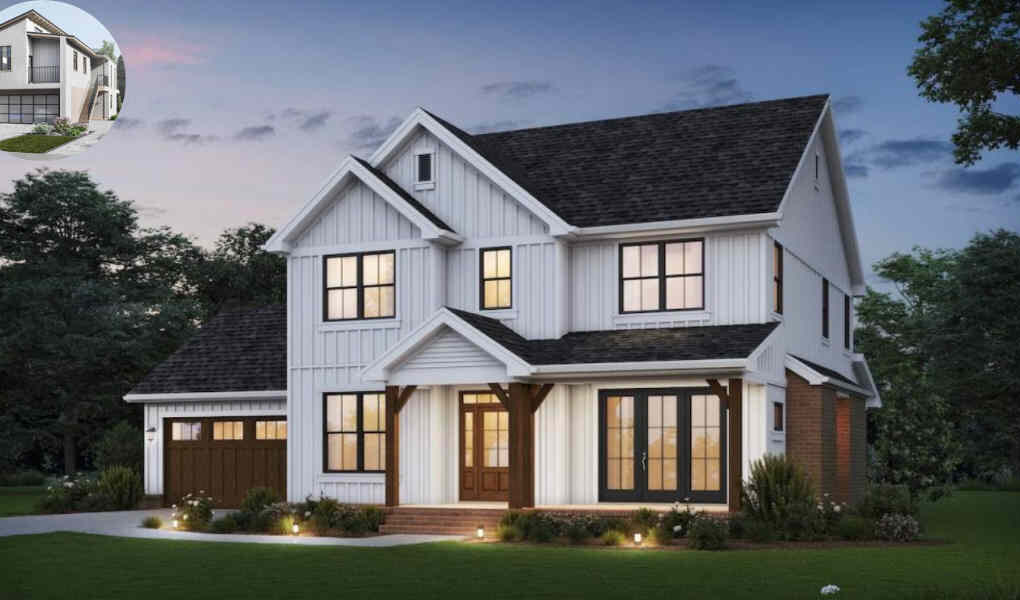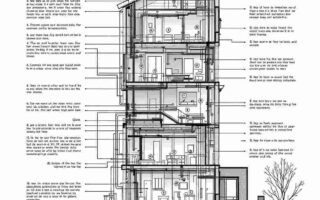When it comes to home design, one of the most significant aspects to consider is the height of a two-story house. This measurement not only influences the aesthetics of your home but also affects functionality, building regulations, and even your budget.
By the end of this post, you will have a comprehensive understanding of how tall a two-story house typically is, what influences its height, and what to keep in mind during the planning and construction process.
What Is a Two-Story House?

Definition and Basic Explanation
A two-story house is defined as a residential structure with two distinct levels or floors. Each level typically serves a different purpose; for instance, the ground floor may host common areas, such as living rooms and kitchens, while the upper floor is often reserved for private spaces, including bedrooms and bathrooms.
Typical Layout and Use of Floors
In most two-story houses, the layout is designed to optimize the use of space. Commonly, the ground floor includes:
- Living Room: A space for relaxation and entertainment.
- Kitchen: The heart of the home, often connected to dining areas.
- Dining Room: A separate area for family meals.
The upper floor typically houses:
- Bedrooms: Personal spaces for family members.
- Bathrooms: Often placed near bedrooms for convenience.
Importance of Height in Two-Story House Design
The height of a two-story house is not just a matter of aesthetics but also functionality. It affects how spacious the rooms feel and can influence natural light, ventilation, and even energy efficiency. Understanding how tall a two-story house should be is crucial for achieving the desired ambiance and usability.
Average Height of a Two-Story House

Standard Height Range
On average, a two-story house stands between 20 and 25 feet (approximately 6.1 to 7.6 meters) from the ground to the peak of the roof. This range is generally considered standard in residential construction.
How This Range Is Calculated
The average height is determined by several components:
- Floor Height: Typically, each story has a height ranging from 8 to 10 feet.
- Floor Thickness: This is usually about 1 to 1.2 feet (12-14 inches), which includes the structural elements between floors.
- Roof Pitch: A steeper roof design can add additional height.
You may also read (what makes a house a high ranch style).
Taller Designs
While most two-story homes fall within the 20- to 25-foot range, some can reach heights of 30 to 35 feet (approximately 9.1 to 10.7 meters), depending on the architectural style and design choices.
Height RangeFeetMeters
Standard 20 – 25 ft 6.1 – 7.6 m
Taller 30 – 35 ft 9.1 – 10.7 m
Factors Influencing the Height of a Two-Story House

Several elements can influence the final height of a two-story house:
Floor-to-Ceiling Height
The floor-to-ceiling height in residential buildings commonly ranges from 8 to 10 feet. This measurement varies based on personal preferences and design choices.
Floor Thickness
Typically, the thickness of each floor is around 1 to 1.2 feet (12-14 inches). This thickness accounts for the structural components that support the flooring above.
Roof Design and Pitch
Different roof designs, including gable, hipped, or flat roofs, significantly affect the overall height. For example, a steep-pitched roof can add several feet to the height of the house.
Foundation Type
The type of foundation can also contribute to the height. A raised foundation or the presence of a basement can elevate the overall structure, making it taller than standard.
Architectural Style
The architectural style of the house—whether modern, colonial, or Victorian—also affects the height. Different styles have varying design philosophies that influence the height of a home.
Local Building Codes and Height Restrictions
Lastly, local building codes may impose height restrictions that dictate the maximum height of a two-story house. It’s vital to check these regulations before finalizing your designs.
How Tall Is Each Story in a Two-Story House?

Typical Story Height
In residential buildings, the heights of stories are usually around 8 to 10 feet. This height provides a comfortable living space, offering adequate natural light and ventilation.
Differences Between Residential and Commercial Story Heights
It’s interesting to note that there’s a difference in story heights between residential and commercial buildings. While residential spaces typically maintain a height of about 10 feet, commercial buildings often reach around 14 feet or more to accommodate larger equipment and flexible space usage.
Ground Floor vs. Upper Floor Ceiling Height Variations
The ceiling heights can differ between the ground and upper floors. It’s common for the ground floor to have a higher ceiling to create a more spacious feel, while the upper floor may have slightly lower ceilings.
Impact of Vaulted or Drop Ceilings
In some designs, vaulted ceilings on the upper floors can create the illusion of greater height, while drop ceilings can reduce the overall height. These design choices can significantly affect the ambiance of the space.
Why Does the Height of a Two-Story House Matter?
Aesthetic Considerations
The height of your house plays a crucial role in its overall appearance. A well-proportioned height can enhance the home’s curb appeal and ensure it harmonizes with neighbouring homes.
You may also read (inside the crazy house a tour).
Practical Implications
Height also has practical implications, including:
- Interior Space: A taller home provides more usable space.
- Natural Light: Higher ceilings can accommodate larger windows, allowing for increased natural light.
- Ventilation: Adequate height can improve airflow and reduce humidity.
Impact on Construction Costs
Building a taller house can increase construction and material costs. It’s essential to consider this when budgeting for your home.
Compliance with Local Zoning and Building Codes
Understanding the height regulations in your area is vital. Non-compliance can lead to legal issues and potential fines.
How to Measure the Height of a Two-Story House
Measurement Standards
The standard method for measuring the height of a two-story house is from ground level to the highest point of the roof. This provides an accurate representation of the total height.
Tools and Methods Used
Architects and builders typically use tools such as:
- Laser Levels: For precise measurements.
- Measuring Tapes: A traditional but effective method.
Importance of Accurate Measurement
Accurate measurements are crucial not only for design but also for securing necessary permits and ensuring compliance with local regulations.
Design Tips for Managing the Height of a Two-Story House
Choosing Ceiling Heights
When planning your two-story house, consider the ceiling heights that will provide both comfort and a stylish look. Higher ceilings can create a more open atmosphere but may require additional heating or cooling.
Selecting Roof Types
The type of roof you choose can complement your height goals. For example, a gabled roof may enhance the visual height of your home.
Balancing Height with Energy Efficiency
While aiming for height, it’s also essential to balance this with energy efficiency. Proper insulation and energy-efficient windows can help maintain comfort without excessive energy costs.
Consulting Professionals
Lastly, consulting with architects and contractors can provide valuable insights tailored to your specific needs and local regulations.
You may also read (frame houses the perfect blend of style and function).


